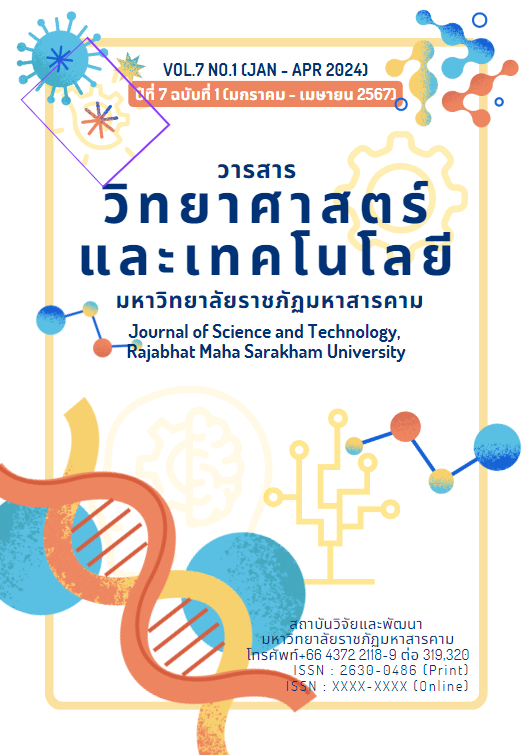Development Free Fall Motion teaching aid with Metal Detection sensor
Keywords:
Free-fall motion experimental device, Arduino Uno R3, Metal detectionAbstract
This paper presents the development of a low-cost microcontroller based free-fall motion experimental devices. The free full time results was printed on LCD display. The purpose is to improve a free-fall experimental device performance by considering cost reduction, simple to use, high both accuracy and precision results. The control algorithm was implemented in an Arduino Uno R3, which is an inexpensive microcontroller unit (mcu). The height is measured from the lowest point of the metal ball to the strike plate using HC-SR04 ultrasonic sensor. To reduce the impact force on a strike plate, a method for detecting a fallen metal ball using metal detection systems. The experimental result shown that the gravity measured using the Free-Fall prototype is 10.0 m/s2. Compared to the value of g measured at the nearby Udon Thani province by the National Institute of Metrology (Thailand) as 9.784156709, the value from the experiment device differs from the standard value by 2.206 %.
References
Direk B., Santipap S., Aphichard P., Udomdej P. and Chutima O., (2013). Development of Experimental Equipment for Observation the Freefall Action by Piezoelectric Device. Thai Science and Technology Journal. 21(1). 41-47.
Janthanee A., Chanoknan B., and Charud B., (2019). Free Falling Experiment Controlled by Microcomputer. Science and Technology RMUTT Journal. 9(1). 54-65.
McDougal, D.W., (2012) Newton’s Gravity: An Introductory Guide to the Mechanics of the Universe. Springer and Associates, Berlin
Pagamas G., Suwimol R., Chitnarong S., Chairote Y. and Yaowarat S. (2011). Studies of Free Falling Object and Simple Pendulum Using Digital Video Analysis, Walailak J Sci & Tech, 8(1). 63‐69.
Patrik Vogt and Jochen Kuhn. (2012). Analyzing free fall with a smartphone acceleration sensor. The Physics Teacher. 50(3). 182-183.
Rahul N. Dhole, Vishal S. Undre, Chetan R. Solanki, Satish R. Pawale, (2014). Smart traffic signal using ultrasonic sensor, International Conference on Green Computing Communication and Electrical Engineering (ICGCCEE), Coimbatore, India, 1-4
Raymond A. Serway, Chris Vuille, and Jerry S. Faughn, (2009). College Physics 8thed., Cengage Learning: Canada
Somporn B., (2019). A Set of Gravitational Acceleration Measurement Using Simple Microcontroller, DIY Sensors and Smartphone. J. Res. Unit Sci. Technol. Environ. Learning. 10(2). 288-299.
Suchane P., (2014). Development of the Prototype of Free fall Experiment. (Research report). Songkhla: Thaksin University
Tasanee P., (2018). The measurement of gravity in Thailand and its importance, National Institute of Metrology (Thailand).



